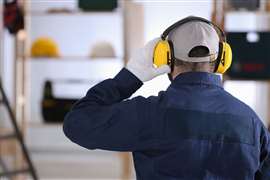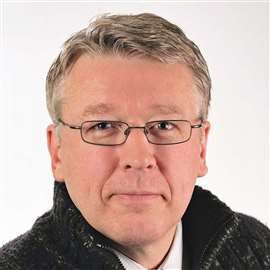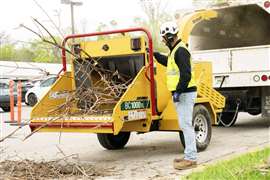Read this article in French German Italian Portuguese Spanish
‘Noise reduction’ an additional benefit revealed during Skanska-Volvo testing
26 February 2024
Skanska USA announced that a 90-day pilot program using the Volvo EC230 Electric excavator on a transit project in Los Angeles, US, improved health & safety and sustainability goals
 A Volvo EC230 Electric excavator does work in Los Angeles, US, as part of a pilot program run by Skanska. (Image: Skanska)
A Volvo EC230 Electric excavator does work in Los Angeles, US, as part of a pilot program run by Skanska. (Image: Skanska)
Servicing the Purple (D Line) Extension Transit Project in Los Angeles, at the South Yard of the Wilshire/La Brea station, the excavator – supplied by US-based Sunbelt Rentals – was used to load trucks of construction material from a stockpile, said Skanska. The firm believed it to be “among the first” to pilot the Volvo electric excavator in North America.
The company said the objective of the roughly three-month trial was to test the capability of a battery-powered excavator to perform the needed work in relation to a diesel-powered counterpart.
“Results of the 90-day trial indicate that the Volvo EC230 Electric performed the necessary activities as intended while keeping the pace of work on schedule,” said Skanska. “The results noted in the initial findings indicate reduced emissions and lowered costs.”
The global contractor said, “The unit reduced carbon per hour by 66% (34 kilograms) and saved an estimated 74% in cost per hour (US$15.15).”
Noise reduction highlighted as additional benefit
“The electric excavator generated much less vibration and noise than a diesel-powered version,” said Skanska. “Not only does this create a less exhaustive and better working environment for the operator, but it also results in less construction noise for the surrounding community.”
Reducing decibels on-site has been a focus for the US government. The country’s Department of Labor, last November, announced its most recent renewal of a Mid-Atlantic regional programme that provides guidance and direction for navigating hazardous noise levels at work sites.
 A construction worker adjusts hearing protection. Noise reduction is a focus of health and safety initiatives in the industry. (Image: Adobe Stock)
A construction worker adjusts hearing protection. Noise reduction is a focus of health and safety initiatives in the industry. (Image: Adobe Stock)
According to the US National Institute for Occupational Safety and Health (NIOSH), potential hearing loss is a hazard for roughly 22 million US workers.
Specifically in the construction industry, NIOSH found about 51% of workers have been exposed to harmful noise, and 52 percent of construction workers (regularly exposed to noise) report not wearing hearing protection.
“Noise controls are the first line of prevention against permanent work-related hearing loss,” explained Michael Rivera, a regional administrator with the US Occupational Safety and Health Administration. “By reducing noise levels even by a few decibels, employers can better protect employees, improve communication and stop excessive noise from distracting workers.”
POWER SOURCING GUIDE
The trusted reference and buyer’s guide for 83 years
The original “desktop search engine,” guiding nearly 10,000 users in more than 90 countries it is the primary reference for specifications and details on all the components that go into engine systems.
Visit Now
STAY CONNECTED




Receive the information you need when you need it through our world-leading magazines, newsletters and daily briefings.
CONNECT WITH THE TEAM













